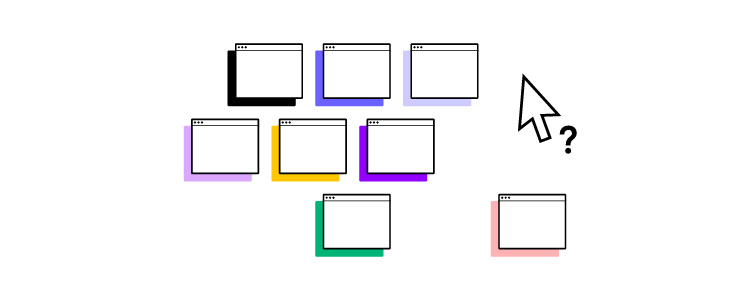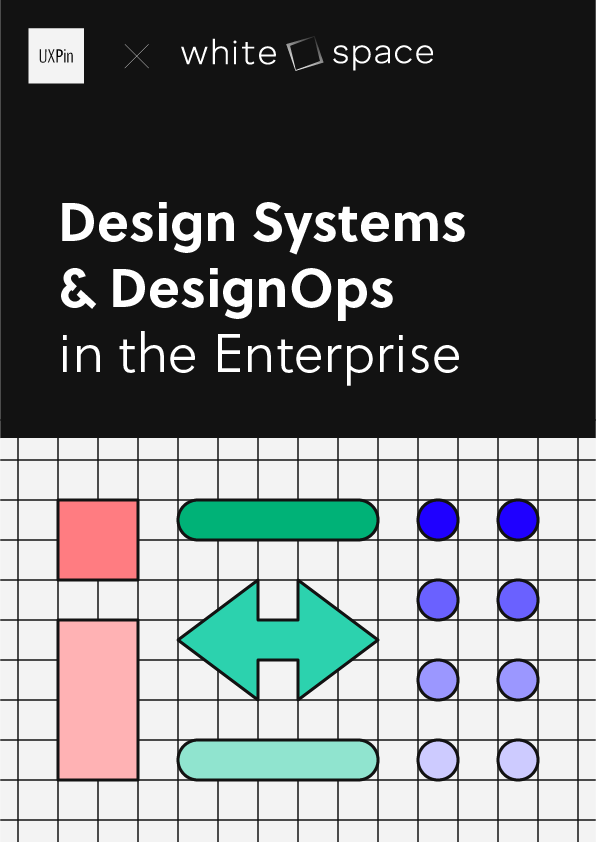AI Personas – How to Use ChatGPT to Create Personas

Using LLM like ChatGPT to create AI personas for UX design is an emerging practice that can enhance the persona development process, making it faster, more data-driven, and adaptable. Here’s how it works and the potential benefits.
If you’re a fan of AI in design, Merge AI is sure to catch your attention. With UXPin’s design tool with AI features, you can combine the power of code-based design systems with AI-driven component generation for more consistent UI and faster design decisions. This innovative tool bridges the gap between designers and developers, ensuring that what you design is exactly what gets built. Test Merge AI for 14 days on trial. Try UXPin for free.
What Are AI Personas?
AI personas are simulated user profiles created with the help of artificial intelligence. These personas are designed to represent different user segments based on data and insights. Traditionally, personas are crafted through user research, interviews, and surveys. With AI, personas can be generated or enriched by analyzing large sets of user data, behaviors, and preferences, allowing for more dynamic and up-to-date user representations.
How to Create AI Personas with ChatGPT
AI personas can transform the traditional UX persona development process by offering dynamic, data-driven profiles that evolve with real user behaviors. ChatGPT can assist UX designers in creating, refining, and updating personas quickly and efficiently. Here’s a comprehensive guide on how to leverage ChatGPT for creating AI personas.
Step 1: Understand Your Target Audience and Gather Initial Data

Before using ChatGPT to generate personas, it’s essential to collect or define the data sources that represent your users. AI personas should be grounded in real information to be truly effective. Some sources include:
- User Surveys: Existing data from customer surveys or interviews.
- Analytics: Data from Google Analytics, heatmaps, and other user behavior tools.
- Customer Feedback: Information from product reviews, support tickets, and feedback forms.
- Market Research: Industry reports and competitor analysis.
Once you’ve gathered your user data, you can feed relevant details to ChatGPT to help generate more accurate personas.
Step 2: Start with Basic Prompts to Generate Persona Outlines
To create AI personas with ChatGPT, you’ll need to start by defining the basic traits that make up a persona. You can use ChatGPT to generate these traits by providing a simple prompt. Here’s an example prompt to begin creating an outline:
Prompt Example: “Help me create a UX persona for a young professional who uses mobile apps to manage personal finances. Include details like age, occupation, goals, pain points, and preferred technology.”

ChatGPT will then generate a persona with a specific user profile based on the information provided. You can adjust this as needed by asking more detailed follow-up questions or refining the initial prompt.
Example Output:
- Name: Emily Jones
- Age: 29
- Occupation: Marketing Manager
- Goals: Track monthly spending, build savings, plan for retirement.
- Pain Points: Struggles with overly complex finance apps; concerned about data privacy.
- Technology: Uses mobile apps on iPhone, prefers clean, simple UIs, syncs with banking apps.
Step 3: Expand Persona Details with Specific Prompts

Once you have a basic persona outline, you can use ChatGPT to enrich it with more specific details, such as motivations, behaviors, or even the type of content they prefer. Here are prompts to expand the persona:
- Goals and Motivations: “What are the main motivations for Emily Jones to use a personal finance app?”
- User Behavior: “Describe how Emily typically interacts with personal finance apps on her mobile device.”
- Pain Points: “What are the biggest pain points for users like Emily when it comes to managing personal finances through mobile apps?”
- Daily Routine: “Describe Emily’s daily routine and when she is most likely to interact with financial tools or apps.”
This iterative process allows you to build detailed, well-rounded personas by continuously refining the responses ChatGPT provides.
Step 4: Create Multiple Personas for Different User Segments

UX projects often need multiple personas to represent different user segments. You can use ChatGPT to create additional personas by altering the input criteria. For example:
Prompt Example: “Create a persona for an older adult who is less tech-savvy and needs an intuitive mobile app for tracking retirement savings.”
This will generate a persona for a different demographic, and you can repeat the process to capture a variety of user segments (e.g., tech-savvy millennials, older users, or small business owners).
Example Output:
- Name: Richard Cooper
- Age: 62
- Occupation: Retired
- Goals: Simplify budgeting for retirement savings.
- Pain Points: Finds most apps too complex, worried about making financial mistakes.
- Technology: Uses Android but prefers apps with large text and straightforward navigation.
Step 5: Use Data to Refine and Validate Personas
After generating initial personas with ChatGPT, you should validate these personas with actual data and feedback. Here’s how you can do it:
- Validate with Real User Feedback:
- Compare AI-generated personas with real user feedback from interviews or surveys to ensure they align with actual behaviors and needs.
- Refine Personas Using Additional Data:
- Use analytics data (such as app usage patterns, popular features, or common drop-off points) to refine personas, updating pain points, goals, or behaviors based on real-world insights.
- Iterate Based on Testing:
- During usability testing, gather more feedback on how users like “Emily” or “Richard” interact with your product. Use this to fine-tune the personas further.
Step 6: Create Scenarios and Journey Maps Using Personas

Once you’ve created your AI personas, you can prompt ChatGPT to create specific user scenarios or journey maps for each persona. This will help you visualize how each persona interacts with your product.
Scenario Prompt Example: “Create a user scenario for Emily Jones using a new feature in a personal finance app that helps her track her spending habits.”
Example Output:
- Scenario: Emily opens the personal finance app at the end of the week to review her spending. She navigates to the “Weekly Summary” feature, where she sees a breakdown of her spending by category. Emily uses the feature to spot an increase in dining out expenses and sets a goal to reduce that spending next month.
You can also generate full user journey maps for a persona by prompting ChatGPT to outline the steps a user might take during a specific interaction, such as signing up for the app or achieving a specific goal.
Step 7: Use Personas for Cross-Team Collaboration

Share AI-generated personas with your team to ensure everyone is aligned. Personas can help:
- Developers understand key features and usability needs.
- Marketers tailor communication and campaigns based on user motivations.
- Designers craft user-centered interfaces that address personas’ pain points and goals.
By integrating AI personas into the workflow, cross-functional teams have a common understanding of the target users, leading to more cohesive decisions.
Step 8: Continuously Update and Improve Personas

One of the key benefits of using AI-generated personas is their ability to evolve. As you gather more data, continue using ChatGPT to update the personas with new insights. This dynamic approach ensures that your personas stay relevant and reflective of real user needs over time.
Update Example: “Based on recent feedback, Emily’s financial goals have changed. Update her persona to reflect a greater focus on long-term investment planning.”
Best Practices for Using AI in Persona Development
- Combine AI with Qualitative Research: While AI like ChatGPT can speed up persona creation, always supplement personas with qualitative user research (interviews, surveys) to ensure depth and accuracy.
- Validate AI Personas with Real Data: Use analytics and real user interactions to refine and confirm the personas created by ChatGPT.
- Keep Personas Dynamic: Don’t treat personas as static. Continuously update them with new data and insights as user behavior evolves.
- Collaborate with the Entire Team: Share the personas across all teams—development, marketing, and design—so everyone works from the same understanding of your target users.
Advantages of Using AI Personas
- Speed – AI can dramatically speed up the persona creation process. Instead of weeks of research and manual creation, AI can help you generate personas in a matter of minutes by processing large datasets or using existing insights.
- Data-Driven Insights – AI personas can be based on actual user behavior and real-time data rather than relying solely on assumptions or limited qualitative research. This makes them more representative of current user needs and trends.
- Scalability –AI can generate personas for multiple user segments quickly, which is useful for large projects or products that target diverse audiences. You can also create dynamic personas that evolve as new data comes in.
- Consistency –AI ensures consistency across persona creation, reducing the subjective bias that can occur when different team members manually create personas. ChatGPT can be programmed to follow specific guidelines or criteria, maintaining uniformity.
- Adaptability – Unlike traditional personas that can become outdated over time, AI personas can be updated easily by feeding new data into the system. This adaptability allows designers to keep pace with changing user needs and market conditions.
Challenges and Considerations
- Accuracy and Depth – While AI like ChatGPT can analyze and generate personas based on available data, it may lack the depth of insights gained from direct user interactions. AI personas should be supplemented with qualitative research to ensure they capture the emotional and psychological nuances of users.
- Ethical Concerns – AI-generated personas rely on data, which raises ethical considerations about data privacy and bias. Care must be taken to ensure that data used is representative, unbiased, and complies with privacy regulations.
- Over-Reliance on AI – AI should not replace human intuition and empathy in the persona creation process. While AI can assist, it’s essential for designers to remain engaged with users through interviews and research to fully understand their needs.
Are AI Personas Any Good?
AI like ChatGPT can be a powerful tool for creating or enhancing UX personas. It speeds up the persona development process, allows for dynamic updates, and provides more data-driven insights. However, it’s important to combine AI-generated personas with traditional user research to ensure depth, empathy, and ethical integrity in your design process. By using AI personas, UX designers can save time, focus on more strategic tasks, and create more accurate and adaptable user profiles.
UXPin’s Merge revolutionized how teams design by allowing them to create fully functional, code-based components directly in the design tool. Now, with the power of AI, UXPin takes your design process to an entirely new level. Imagine the seamless integration of design systems and AI component generation that fits your design system perfectly. Test Merge AI for 14 days on trial. Try UXPin for free.




